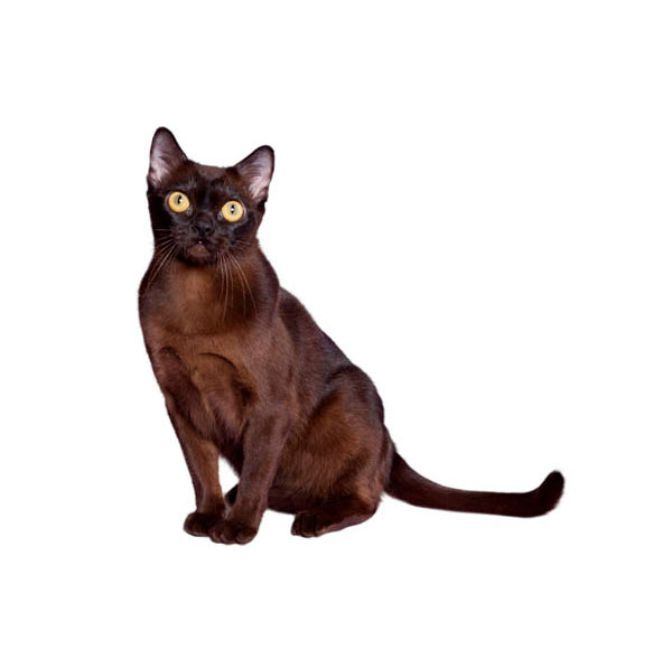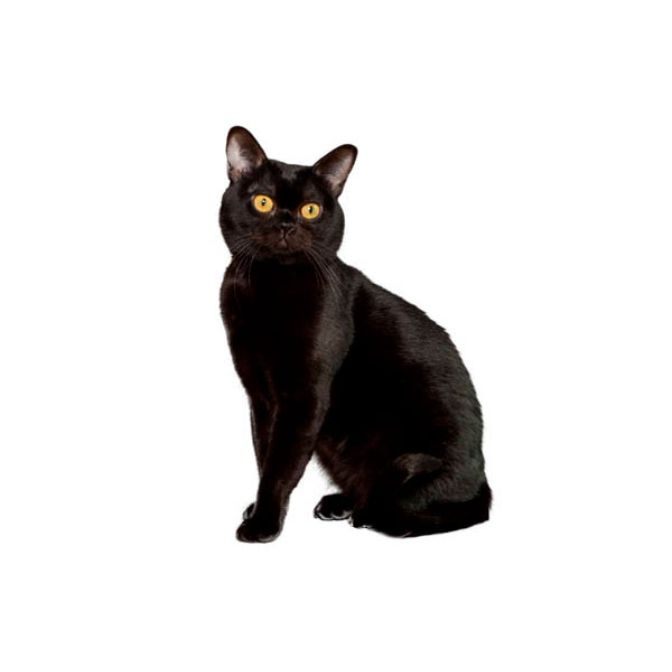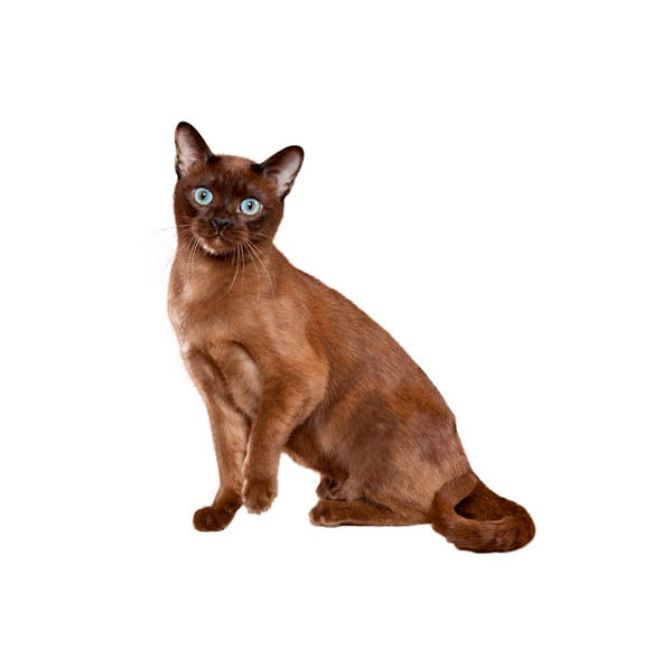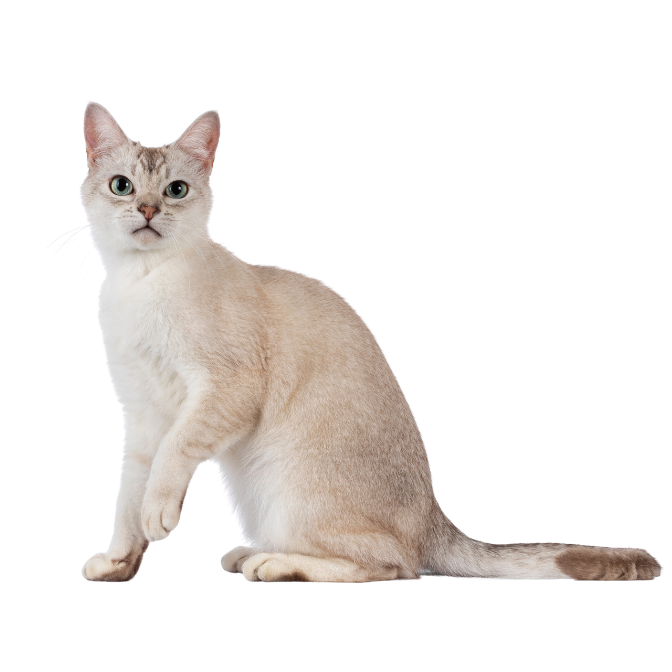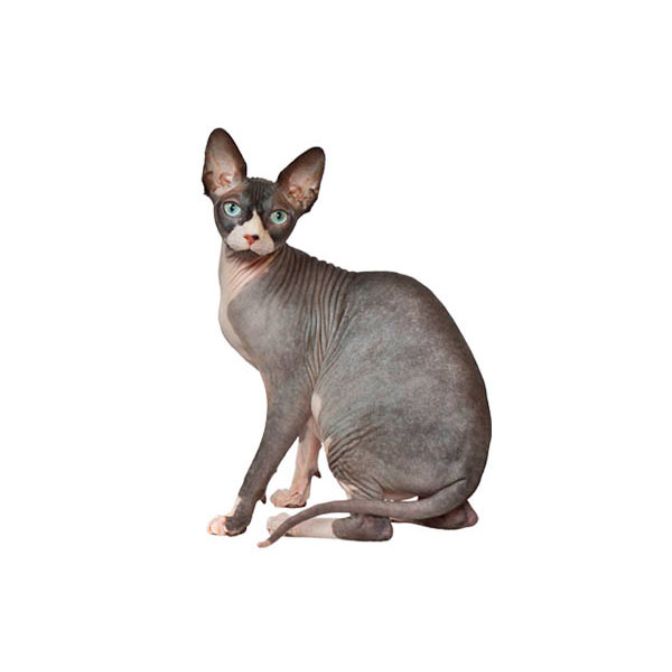Burmese
The Burmese thrives on companionship with her humans and other cats. Like her Siamese ancestors, she enjoys conversation, but has a much softer, sweeter voice.
Medium
Short
High
Males: 4.5 to 6.3 kg and females: 3.2 to 4.5 kg
Sable, champagne, blue, platinum
She’s energetic, curious and playful well into adulthood and loves interactive toys and learning new tricks. She loves to give and receive attention, so expect her to follow you around, sit on your lap and snuggle next to you in bed. Guests will be surprised by her outgoing, dog-like nature.
Their compact body is solid and muscular with a rounded head and sweet, expressive eyes. Their ears are medium sized, with rounded tips that tilt slightly forward.
10 to 16 years.
The short glossy coat is a distinctive feature of the Burmese. The coat is fine and lies close to the body. The Burmese cat comes in ten colours but in all colours the underparts will be lighter than the back and the shading will be gradual. There is no notable masking as in the Siamese. The coat is free from bars and spotting although the presence of a few white hairs is permissible.
The coat colour will gradually pale towards the roots. Kittens will not show their true colour until they are adult. A summary of coat colours follows: - 'Brown' - A rich, warm, seal brown shading very slightly on the underparts, the paw pads and nose leather will be dark brown. 'Blue' - A soft, silvery blue grey with a distinct silver sheen on rounded areas, variations in shade of blue are allowed. The paw pads will be pinkish grey and the nose leather dark grey. 'Chocolate' - A warm milk chocolate with as even a colour as possible. Masking should be minimal and degrees of shading are allowed from the milkiest coffee to almost Bourneville but the coat should never be as dark as the brown. Paw pads will be brick red to chocolate and the nose leather warm chocolate brown. 'Lilac' - A pale delicate dove grey with a pinkish hue. Paw pads and nose leather a pinkish grey. 'Red' - Varying shades of tangerine with paler shading on the underparts, some very slight tabby markings are allowed on the face. Paw pads and nose leather will be pink. 'Cream' - A coat colour like clotted cream with a powdered finish.
Again some slight tabby markings are allowed. Paw pads and nose leather pink. 'Torties' - Torties can be brown, blue, lilac, or chocolate hair mixed with red or cream hairs. The paw pads and nose leather will reflect the main colour. The colours should be well mingled but blazes of solid colour and solid legs and or tails are allowed.
Burmese cats do not require excessive grooming as they take care of this themselves but they will enjoy the attention that comes with brushing.
Burmese cats are quite robust healthwise and are not really susceptible to any particular problems. Like any breed of cat they do need to be vaccinated regularly against cat flu and feline enteritis. They should also be wormed regularly against roundworm and tapeworm especially if they are allowed out to hunt. If your cat is allowed outside, external parasites such as fleas, lice, ticks and mites can be a problem but they are easily dealt with by using the modern preparatory treatments.
An active, adult Burmese cat requires 80 Kcals per kg body weight per day. This will be met by the Metabolizable Energy content of the food, i.e. the proportion of the food, which can be used by the body. Therefore, the quantity given must be in excess of this, as some will be wasted in the digestive process. However, Burmese cats rarely overeat and in practice it will become obvious how much your cat requires each day. Many Burmese are fed dry food ad lib.
Dr. Joseph Thompson brought the first Burmese cat to America in 1930. Her name was “Wong Mau” and she was bred with Siamese cats. Through selective breeding, Thompson was able to achieve the sable coat color and isolate it for further breeding.
The breed was registered with the Cat Fanciers Association (CFA) in 1936, but registration was suspended in 1947 because Siamese cats were still being used in breeding programs. Once this practice was eliminated, registrations resumed in 1953. The Burmese cat was accepted by The International Cat Association (TICA) in 1979.
The Burmese cat resulted from a cross of the Siamese with the “copper cat” of Burma (present-day Myanmar).
They may have been kept by priests in temples and palaces.
The Burmese was one of the original breeds accepted by TICA.
